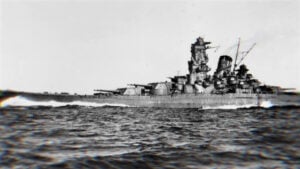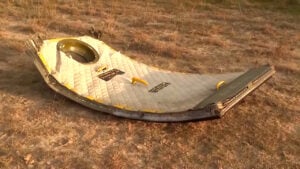Why This Unique World War Two Aircraft Terrified the Germans

YouTube / History Hit
Nicknamed the “Wooden Wonder,” the de Havilland Mosquito was a masterpiece of ingenuity and defiance. At first glance, it seemed unremarkable- a lightweight aircraft made entirely of wood, dismissed by skeptics as a fragile experiment.
Yet this unassuming creation would go on to terrify the German Air Force and rewrite the rules of aerial warfare. With blistering speed, unmatched maneuverability, and the versatility to outfly almost anything in the sky, the Mosquito became one of the Royal Air Force’s most valuable assets of World War II, proof that brilliance sometimes comes in the most unexpected forms.
Versatile Aircraft
Nicknamed the “Wooden Wonder” and sometimes the “Termite’s Dream,” the De Havilland Mosquito earned its titles from its unique plywood construction. While this design presented some challenges in tropical climates, the aircraft proved exceptionally effective in the European theatre and in Canada. Its wooden frame even gave it an early form of “stealth,” making it less detectable by radar, a remarkable advantage for its time.
Renowned for its versatility, the Mosquito served in a wide range of roles, from night-fighting missions to precision bombing raids, operating across nearly every theatre of World War II. Some aircraft were even adapted as fast transports, carrying high-value cargo or VIP passengers. Its versatility made the Mosquito a key asset for special operations.
Notable missions included Operation Jericho in early 1944, the daring attack on Amiens Prison aimed at freeing Allied prisoners, as well as targeted strikes on military intelligence, security, and police facilities, including Gestapo headquarters. Another remarkable operation took place on January 30th, 1943, when Mosquitos attacked Berlin’s main broadcasting station. The timing was deliberate: it coincided with Hermann Göring’s speech marking the 10th anniversary of the Nazi rise to power, successfully cutting his address off the air.
The Wooden Wonder
The Mosquito’s distinctive wooden construction also made it remarkably resistant to flak and light anti-aircraft fire. Its durability meant that crews frequently returned from missions relatively unscathed, as the aircraft could sustain significant damage and still stay airborne.
When it first appeared, its speed was so exceptional that it outmatched many frontline fighters of the era, Allied or Axis. Its prototype held the title of fastest aircraft for just over two years, reaching a recorded top speed of 439 mph, though no operational Mosquito ever quite reached that peak. It outpaced most early models of other iconic planes, such as the Supermarine Spitfire, until later variants eventually caught up or surpassed it, just before the jet age transformed aerial speed records. Today, only about 30 Mosquitos have survived, with a small number still airworthy and capable of taking to the skies.




















